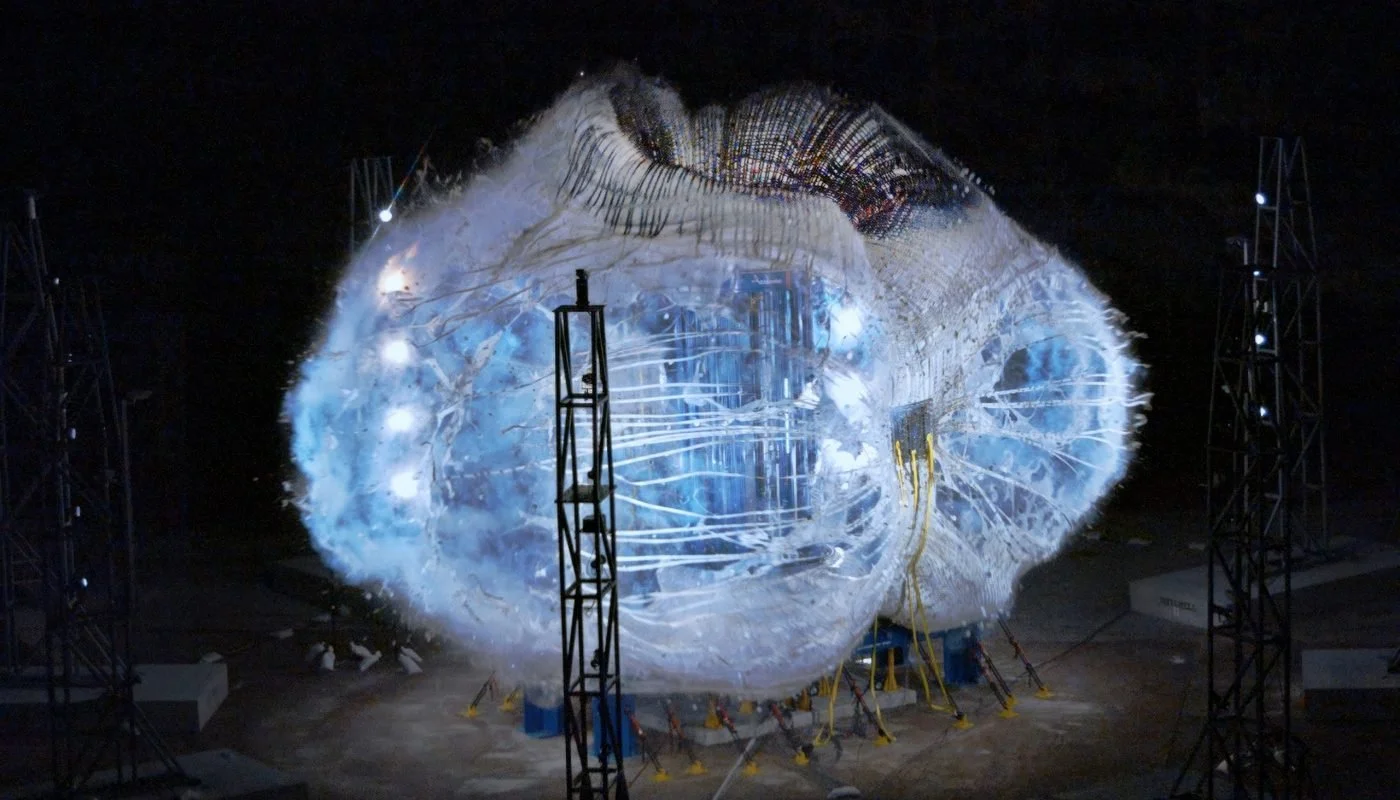Sierra Space Advances its Revolutionary Commercial Space Station Technology
Credit: Sierra Space
Sierra Space, a leading commercial space company building the first end-to-end business and technology platform in space, has achieved a groundbreaking milestone by successfully designing, manufacturing, assembling and testing its first full-scale, expandable space station structure, alongside exclusive softgoods technology partner ILC Dover.
By the Numbers:
Company’s first stress test of a full-size, inflatable space station structure
Test unit stood over 20’ tall and was comparable in size to an average family home
The article was 300 m³ in volume, or 1/3rd the volume of the Intl. Space Station
Test results exceeded NASA’s recommended x4 safety levels by 27%
The pressure shell for Sierra Space’s LIFE™ (Large Integrated Flexible Environment) habitat is made of expandable “softgoods,” or woven fabrics that perform like a rigid structure once inflated. During an Ultimate Burst Pressure (UBP) test, the teams inflate the test article until it fails, which helps determine how strong its softgoods materials would be under extreme stresses in the harsh environment of space. The full-scale unit in this test reached 77 psi before it burst, which well exceeds (+27%) NASA’s recommended level of 60.8 psi (maximum operating pressure of 15.2 psi multiplied by a safety factor of four).
The achievement underscores Sierra Space’s commitment to advancing the cutting-edge design and development of commercial space stations and positions the company well ahead of its global competitors. The company’s expandable technology provides for on-orbit infrastructure volume greater than 5x the fairing volume used to transport the system to orbit.
“We are driving the reinvention of the space station that will shape a new era of humanity’s exploration and discovery in Low Earth Orbit and beyond. Sierra Space’s inflatable space station technology offers the absolute largest in-space pressured volume, the best unit economics per on-orbit volume and lowest launch and total operating costs,” said Sierra Space CEO Tom Vice. “Having the best unit economics positions Sierra Space as the category leader in microgravity research and product development, providing customers with the most attractive return on their investment.”
Sierra Space’s LIFE is packed inside a standard five-meter rocket fairing and inflates to the size of a three-story apartment building on orbit. In just three launches, the modular LIFE units can create a living and working environment in space that is larger, volume-wise than the entire International Space Station (ISS). In coming years, the company will iterate on larger designs. A 1400-cubic-meter version, packaged inside a seven-meter rocket fairing, for example, would surpass the size of the ISS in a single launch.
Building upon this successful test, Sierra Space will embark on an aggressive 2024 testing campaign at both sub- and full-scale, including a series of UBP tests in tandem with early-stage development of the primary Atmospheric Barrier and Micrometeoroid Orbital Debris (MMOD) layers.
“Over the past two years, our team has worked tirelessly to reach this point. Working with our key suppliers and strategic partners, Sierra Space has guided our collaborative effort and reached new heights with this latest UBP test,” said Shawn Buckley, Senior Director of Engineering and Chief Technologist of EarthSpace Systems. “We have assembled the expertise and knowledge that is required to propel this amazing technology to the next steps – Low Earth Orbit and beyond.”
The test specifically focused on the LIFE habitat pressure shell – otherwise known as the restraint layer – which is comprised of Vectran straps along with a series of other high-strength fabric materials. Sierra Space, working with its exclusive softgoods technology partner ILC Dover, has specifically designed and tested Vectran straps at the component and sub-scale levels prior to this full-scale test. Vectran is stronger than steel when inflated on-orbit and provides high margins of safety under pressure.
“Our expertise in space softgoods and passion for innovation continue to position ILC Dover and Sierra Space as the leading co-developers of inflatable space habitats,” said Rob Reed, President of Space & Engineered Solutions at ILC Dover. “The successful full-scale burst test is an undeniable leap toward a new reality of how humans live and operate in space, and we are proud to celebrate this milestone as we work to expand humanity’s capabilities in Low Earth Orbit.”
This recent full-scale UBP test was performed with support from NASA via a Reimbursable Space Act Agreement in which NASA’s Marshall Space Flight Center provides services to Sierra Space in support of its exploration and commercial Low Earth Orbit technology development and risk reduction activities. This test occurred in Huntsville, Ala., on Redstone Arsenal adjacent to the historic Saturn 1/1B test stand.
